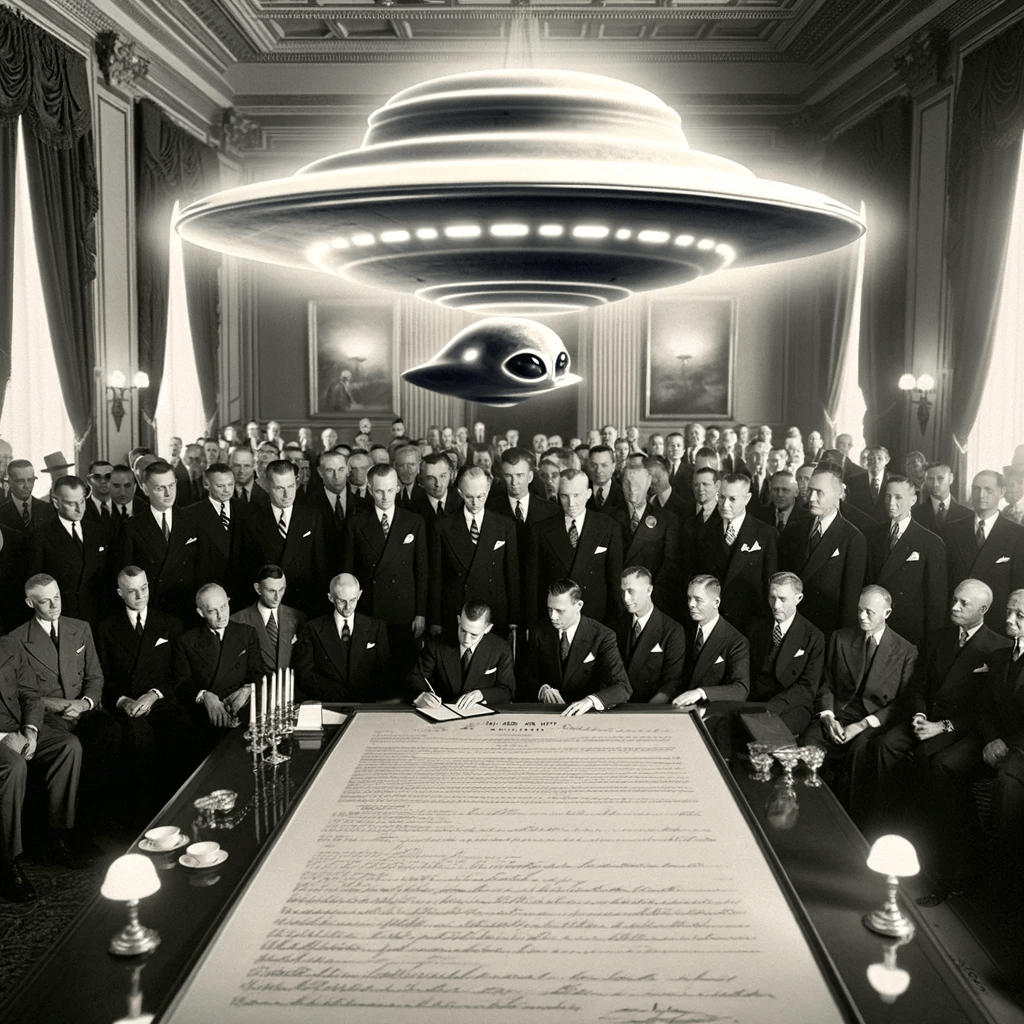National Security Act of 1947

The National Security Act of 1947 was a law passed by the U.S. Congress on July 26, 1947, which realigned and restructured the U.S. Armed Forces, foreign policy, and Intelligence Community apparatus in the aftermath of World War II.
This Act had several key provisions:
- It created the National Security Council (NSC) to advise the President on domestic, foreign, and military policies and to ensure cooperation between these different areas. The NSC includes the President, Vice President, Secretary of State, Secretary of Defense, and other members as needed.
- It established the Central Intelligence Agency (CIA), which was responsible for collecting and analyzing information about foreign governments, corporations, individuals, and any activities that could potentially affect American policy. The CIA was also given tasks related to counterintelligence and covert operations.
- The Act merged the Department of War (renamed as the Department of the Army) and the Department of the Navy into the National Military Establishment (NME), headed by the Secretary of Defense. It also created the U.S. Air Force as an independent service, equal to the U.S. Army and U.S. Navy. The NME was later renamed the Department of Defense in 1949, becoming a unified department under civilian control.
- The Act established the Joint Chiefs of Staff, which included the heads of each branch of the armed services, to coordinate military policy and action.
- It formed the United States National Security Resources Board (NSRB) to advise the President on the coordination of military, industrial, and civilian resources to support national security needs.
The National Security Act was a major restructuring of the U.S. government’s military and intelligence agencies following World War II. The act and its changes, along with later amendments, continue to provide the framework for modern U.S. military and intelligence operations.
While the National Security Act of 1947 itself did not directly provide mechanisms for covert or “underground” projects, it did set the stage for such activities through the creation of the Central Intelligence Agency (CIA) and the National Security Council (NSC).
The Act authorized the CIA to perform such other functions and duties related to intelligence affecting the national security as the National Security Council may from time to time direct. This broad mandate allowed the NSC, and by extension the CIA, to undertake covert operations and projects, which were often classified or “underground.”
This was further solidified by NSC-10/2, a National Security Council directive approved in June 1948 that broadly authorized the CIA to conduct covert operations. This directive defined covert operations as “all activities (other than those for acquiring intelligence) conducted abroad in support of national foreign policy objectives which are planned and executed so that the role of the U.S. Government is not apparent or acknowledged publicly.”
This structure allowed the CIA and other organizations to conduct a variety of covert or “underground” projects throughout the Cold War and beyond, often with little direct oversight. Many of these projects, such as Operation Paperclip (the secret recruitment of German scientists after World War II), Operation CHAOS (an effort to monitor anti-war and other dissident groups in the U.S.), and the various operations associated with regime change in countries like Iran (Operation Ajax) and Chile (Operation Condor), have been controversial and have led to calls for greater oversight and control over covert operations.
Dr. Edgar Mitchell, the Apollo 14 astronaut who was the sixth person to walk on the moon, was known for his beliefs in extraterrestrial life and UFOs. He frequently spoke about the issue and was an advocate for the release of government-held information on the subject.
Mitchell’s claims are in line with the belief held by some that the establishment of the National Security Act of 1947, and more importantly, the institutions it created (like the CIA), contributed to an environment where information about UFOs could be classified and kept from public view.
The reasoning here is that these institutions, in the name of national security, could have justified the collection, analysis, and possibly the concealment of information about unidentified flying objects (UFOs) or extraterrestrial phenomena. The argument often asserts that if these phenomena posed potential threats, or could provide technological advancement, they would fall under the purview of national security.

